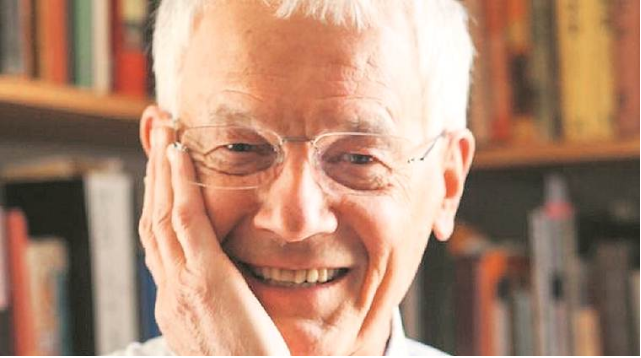Author John Stratton Hawley on his new book on Vrindavan, and how the city’s history is steeped in a vision of ‘Hinduism’ that doesn’t correspond to the one propagated today.
Forty six years after he first visited Vrindavan, John Stratton Hawley, Claire Tow Professor of Religion at Barnard College, Columbia University, author and editor of over 20 books on Hinduism, found himself writing a deeply personal account of what many regard as “the spiritual capital of India.” What was once an idyllic reimagining of where Krishna had spent his childhood and youth, Vrindavan today is plagued by real-estate development and a polluted Yamuna river. Hawley, 78, is still hopeful that the faith that steered the creation of Vrindavan, will triumph over blatant commercialisation of religion. Excerpts from an interview:
In your book, Krishna’s Playground: Vrindavan in the 21st Century, you’ve written about how you were born into a Christian home, studied religion and psychology at Harvard, where you were introduced to Hinduism. Was Hinduism attractive to you because Hindu gods appear to be more human than one would imagine?
Yes, there’s a sense in Hindu stories and belief that, somehow, human beings belong to a world larger than themselves, including the gods. The gods are fallible and open to the processes of human imagination. To me, that’s a more honest approach to the way religion actually works. Vedanta, to my mind, makes it possible for one to do theology without having to posit the existence of a deity. You can be an atheist and ‘Hindu’; the word comes from Indus, which is where the name India comes from. It’s all about what the self means. The absence of that firm boundary between divinity and humanity was one of the major things that drew me to Hinduism, and in turn, India.

That word (Hinduism) is loaded because of the way it’s historically been used as ammunition to discriminate against those who do not identify as Hindu.
Absolutely. That is another aspect of my great interest in Vrindavan, the one that appears in the Bhagvata Mahatmya, which is an 18th century text, so it’s not that old. It talks about the Vrindavan that was built in the 16th and 17th century by the banks of the Yamuna. Now who built that? It was a result of a concordant between Akbar, Raja Man Singh, the Kachwaha Rajput king, and the Gauras. It’s intrinsically an inter-religious space, where politics and religion are deeply entwined. The pink sandstone that you see there came because of Akbar, who used it in Fatehpur Sikri. On the outside of the temples, you don’t see imagery that appears in other temples, probably as a gesture to Muslim sensibilities. The historical depth of Vrindavan actually offers a vision of ‘Hinduism’ that doesn’t correspond to many modern-day visions of what Hinduism requires.
You first visited Vrindavan in 1974. What took you so long to write this book, which in parts, reads like a love letter to the place?
In 1974, people would see my face and say ‘Hare Krishna’, but I would say ‘Radhe Radhe’, which is the traditional greeting. I wanted to keep distance from the English-speaking environment that came with ISKON because I was going to work on the Ras Leelas, the old traditions. At that time, it was wonderful to see how the 16th century aspects of Vrindavan were being kept alive and were bringing people together.
Increasingly, there is no way to escape how the presence of ISKON and the rest of the world in Vrindavan is changing the face of the town. So I finally decided to look at those aspects of the town that I’d stayed away from, for so long. Vrindavan was intended as a ‘lila-sthal’, a playground, but its rapid degradation is because of our actions as an invasive species — the real estate situation, the polluted water and the population growth.
That idea of play comes alive especially during Holi, doesn’t it, when we are treated to pictures of widows playing with colour? But on other days, does Vrindavan have a larger impact on their lives?
It’s important to look beyond the yearly attention they receive. Recently, Sulabh Foundation has made money available to the widows. There are ashrams established for widows, or women who have been exiled from their homes, where they can learn skills; places that take care of abandoned children, especially girls. So there is an impetus in Vrindavan to take care of girls and women in a way that society outside doesn’t do.



